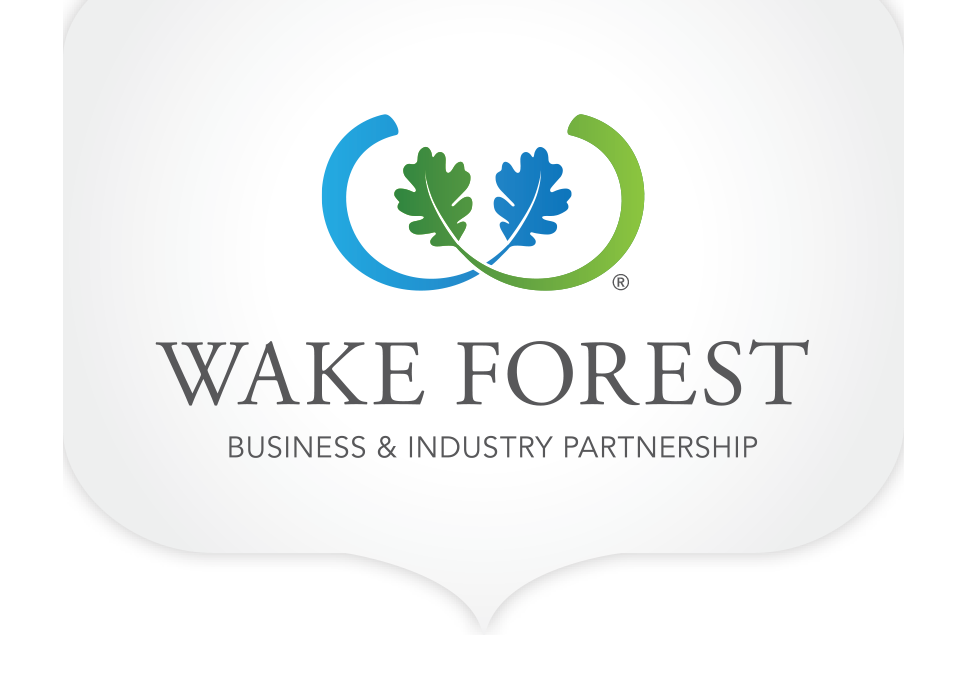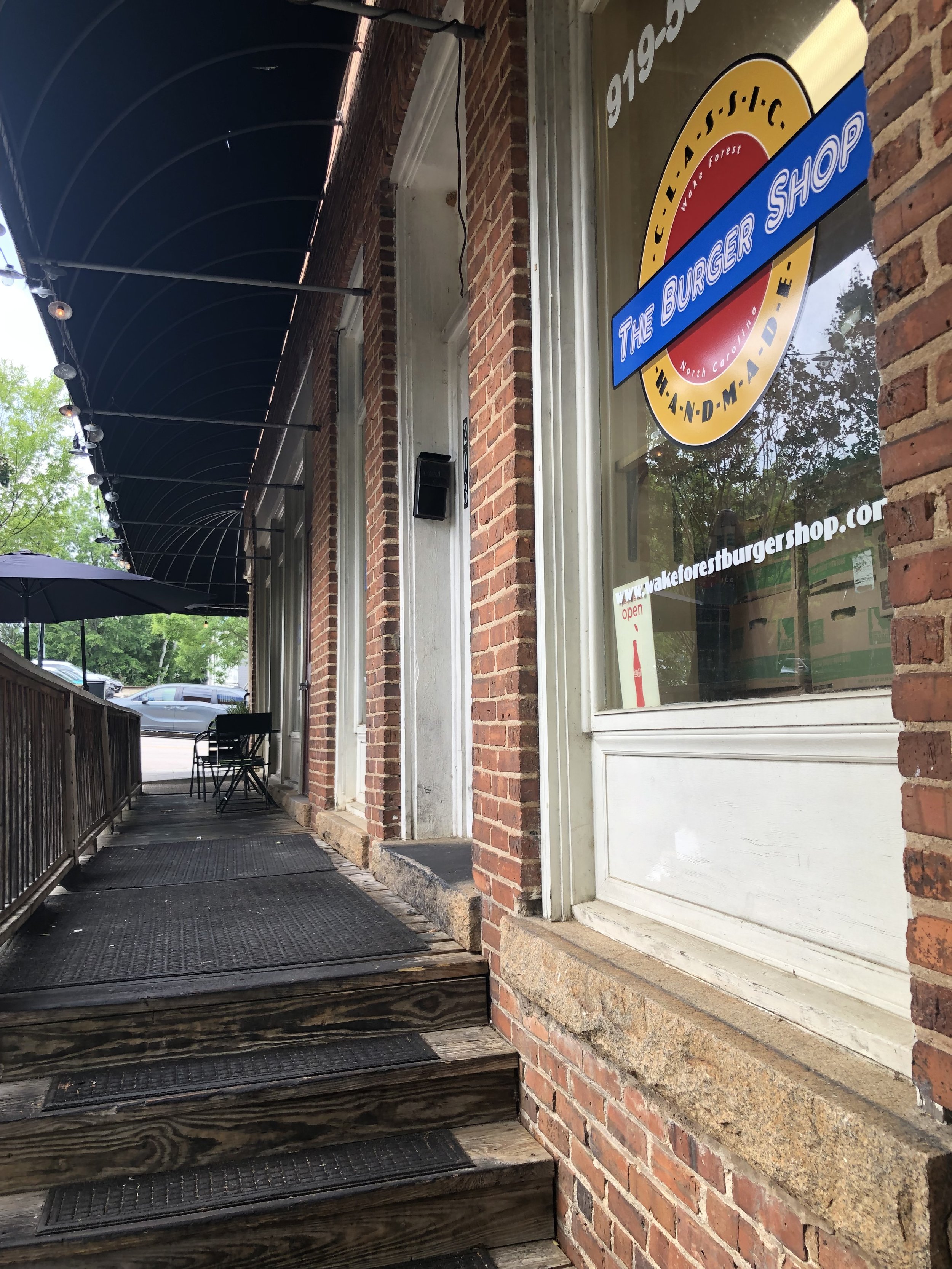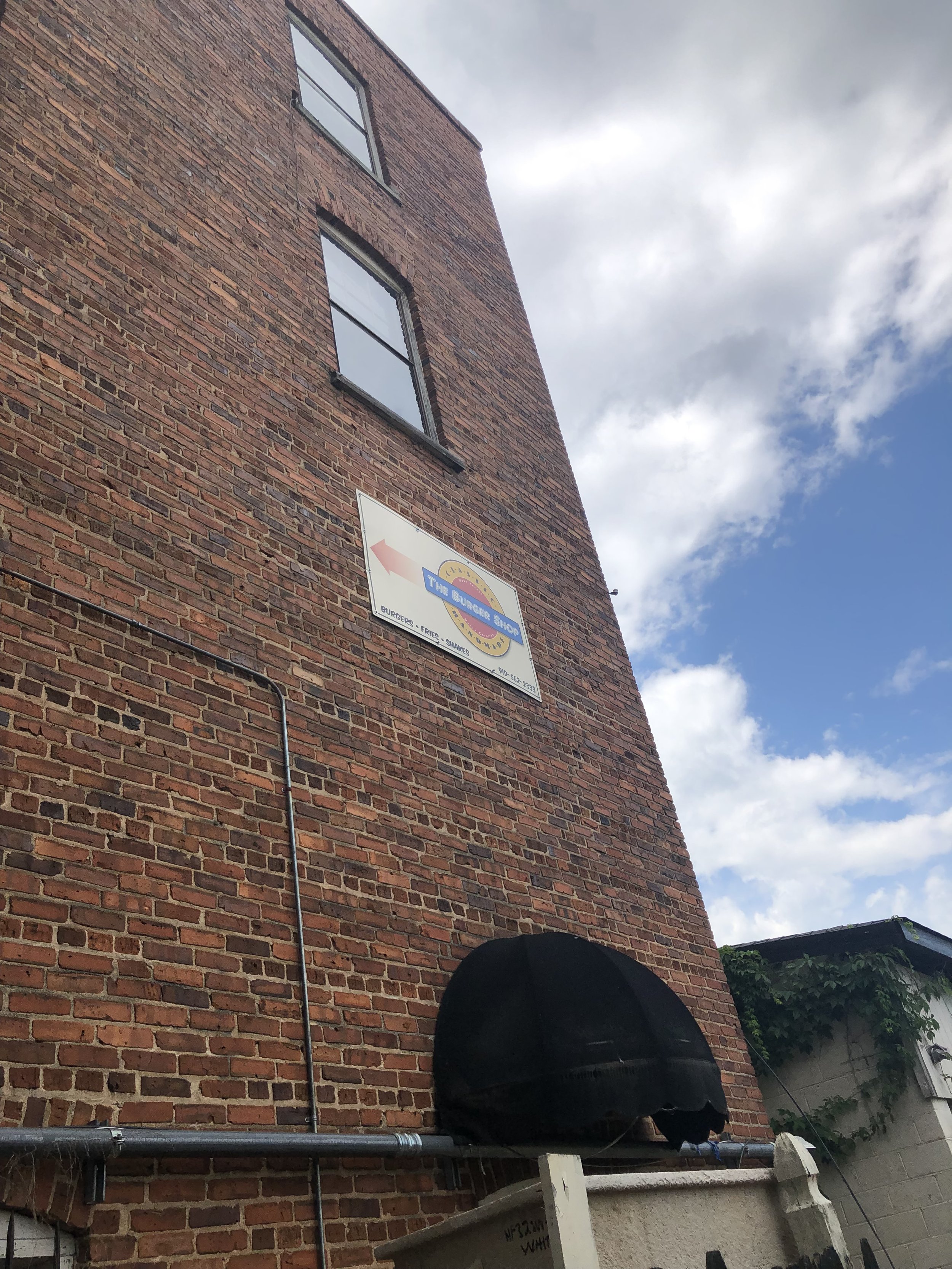It’s mid-afternoon at Downtown Wake Forest’s The Burger Shop as Jennifer Wood checks with customers about the quality of their lunch. Even though it’s Friday before a holiday weekend, business is brisk as regulars and newcomers munch made-to-order burgers and hand-cut fries while sipping orange aid.
“We have a very loyal customer base,” says Wood, who opened the business with her late husband in July 2015. Cuisine at The Burger Shop is admittedly comfort food, she says, though diet-conscious diners are included among the business’s top fans. “We have people who come in every week on their cheat day,” Wood explains, eliciting laughter. She recently had the opportunity to co-locate a second eatery – The Soup & Salad Shop – which offers vegan and gourmet options for customers seeking lighter fare.
Together, Wood’s two enterprises consume much of the first floor of the Wilkinson Building, a vintage property at 111-113 South White Street in the heart of downtown Wake Forest. The early 20th-century building has a rich history as both commercial and residential space. But as owner Bob Johnson, a longtime Wake Forest business leader, outlines the renovation work currently underway there, it become apparent the Wilkinson Building has an equally compelling future.
Historical accounts vary about when exactly the imposing red-brick structure was built. While some say the Wilkinson family built it in 1899, Wake County property records suggest the three-story, nearly 13,000-sq.-ft. building was completed in 1908. “When you start looking at the historical stuff, everything points to the turn of the century,” says Johnson, who previously invested in a historical review of the downtown district. That effort developed into a partnership with local historic preservationists and the Town, culminating with the addition of numerous Downtown properties to the historic register. The Wilkinson is one of several downtown buildings owned by his company, Cameron Park Botanicals. Its unusual street number owes to the fact that it has dual front doors. “Technically, it’s got two entrances,” says Johnson, who was inspired to invest in Wake Forest real estate after he and his wife visited the town of Napa, California.
However old the building is, documentary evidence confirms that it has housed a variety of establishments through the years, including restaurants, retailers, physician offices, an ice cream parlor, a movie theater, dry cleaners, and student apartments. “Up until 1955, Downtown Wake Forest was popping,” recalls Johnson, a Raleigh native. “When we bought the building, the top two floors had dorm-style bathrooms.”
Johnson has owned the property for nearly three decades. For much of that time, it housed Las Margaritas on the basement level. The popular Mexican restaurant closed last year, though Johnson expects it to re-open once renovations are complete by the end of 2024. Bob’s vision also includes plans for a small business space that will be known as Hatch Loft. His company already owns Hatch Co-Working across the street.
“Co-working is not a complicated business,” Johnson says, “but you’ve got to pay attention to the numbers.” Demand for shared workspaces pre-dates the pandemic, but the isolation that came from exclusively home-based work sparked the desire for more in-person interaction. “What COVID brought out was people who want to come in a few days a week and have more social engagement,” explains Johnson. “That is where co-working is finding another niche, and that is related to COVID.” Johnson, in fact, owns the building now housing The Loading Dock Wake Forest and partnered in its renaissance. “You have to follow your customers’ wishes,” he says.
How much is Johnson spending to renovate the Wilkinson Building? “The answer is, I don’t know,” he says. Early estimates were around $650,000. But contractors uncovered a long-hidden termite problem that must be remediated. “So, now I think my number is going to end up as much as $750,000,” he reckons. Johnson says all efforts are being made to minimize disruption to The Burger Shop and its customers.
Johnson is excited about Downtown Wake Forest’s future. Not far from the Wilkinson Building, work is underway on a food hall in the former Chevrolet dealership that will feature local and regional culinary businesses. “One of the inspirations my wife and I have had for Downtown is that it is walkable and has healthy food choices,” Johnson says. He calls Downtown a “diamond in the rough.”
As a destination for businesses, residents, and visitors, the downtown district is the nucleus of Wake Forest’s economy and community. Jason Cannon, President of the Wake Forest Business & Industry Partnership (WFBIP), says “Downtown’s unique character preserves the area’s rich past as a commercial center while offering the modern infrastructure, amenities, and spaces today’s businesses demand.” He points to buildings like the Wilkinson as a way of underscoring the town’s vivid history while serving as an engaging home for companies looking for convenience and flexibility.
“We are deeply fortunate here in Wake Forest to have civic-minded leaders setting the tone for the next century of Downtown’s development while also painstakingly revitalizing its historic gems,” Cannon says. “Bob and his whole family have a multi-generational vision for making Wake Forest’s historic district unique among Triangle downtowns,” he continues. “It’s virtually impossible to stroll down South White Street and not see the impact the Johnsons’ have made on Downtown.”
Vintage Pictures provided by the Wake Forest Historical Museum








